Improving broiler performance is ensuring that their genetic growth potential is achieved by providing optimal environmental conditions. Any deviation from optimal conditions can result in decreased performance.
Broiler chickens are fast-growing chicken breeds created for meat production, and the targeted weight or size can be achieved between 6 to 8 weeks of age. Thus, broiler producers are always seeking means of improving the performance of their broiler chickens, especially now the pressure to stop the usage of antibiotics is on the increase.
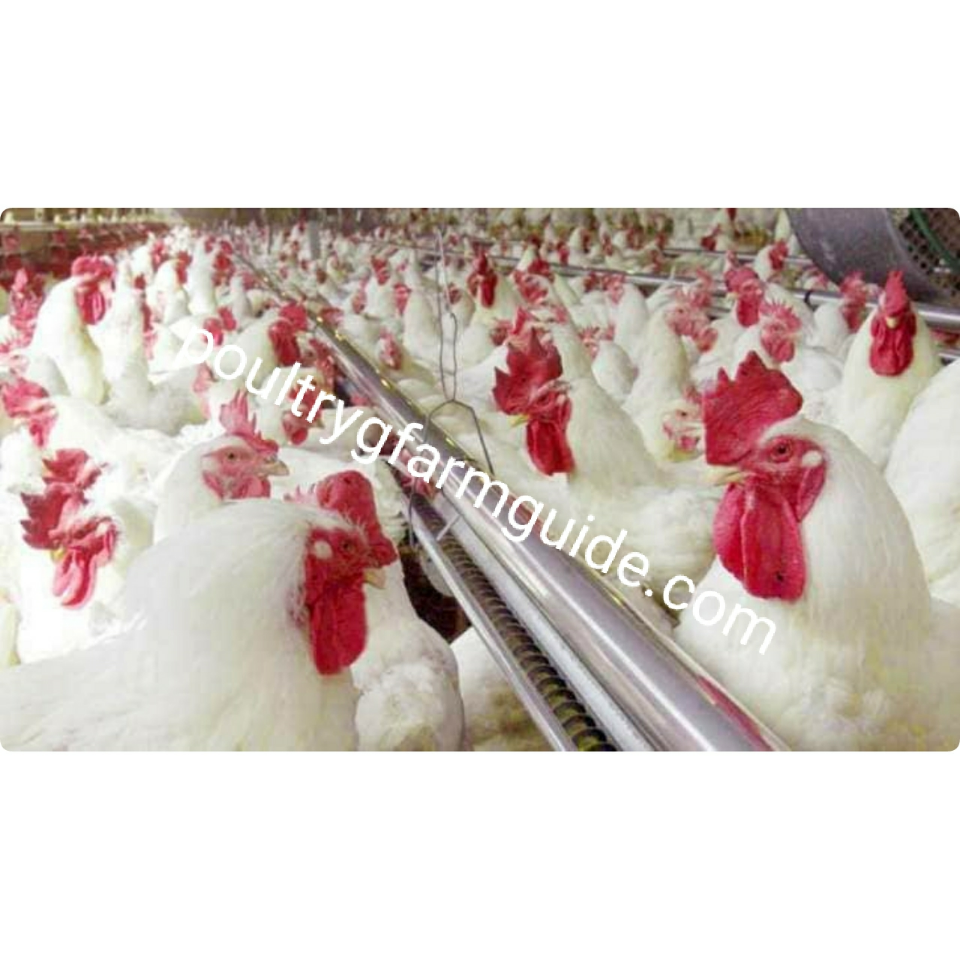
The use of antibiotics growth promoters in broilers has been the common and the most frequently used method to improve broiler performance, and this has caused a metal shift in broiler producers, making them obsessed with the use of antibiotics as the only answer in improving broiler performance, while failing to provide the optimal environmental conditions necessary for effective growth.
It is needless to say that their 'hope' for achieving fast growth will soon or has been cut short since the ban of antibiotics in poultry. Therefore, the need to provide optimal environmental conditions for broiler performance should be prioritized.
What are the conditions needed to improve broilers Performance?
The conditions needed to improve broiler performance include good feed, lighting, Litter quality, Airflow, Water, Space, and Sanitation (bio)security, which are collectively known as 'FLAWS'.
- Feed
- Light
- Airflow
- Water
- Space
The acronym 'FLAWS' actually serves as a detailed approach to best management practices, not only during brooding but also throughout the flock's life.
So, in this post, I am going to look at how each factor affects improving broiler performance
Also, read: How To Make Broiler Chicken Grow Faster
1. Feed Quality

A crucial aspect in raising broilers or chickens, in general, is Feeding- feeding accounts for the major cost of production, and good nutrition is reflected in the bird's performance and its products.
Feeding is more than just giving the birds feed, the feed should be a balanced diets if you want them to do well. Some producers mix complete feeds with cheaper scratch grains, but doing so dilutes the nutrients the chickens receive, and nutrient deficiencies can occur.
Nutrient deficiencies can adversely affect the overall performance of your broilers. Moreover, having a well-balanced diet is never enough, how do we ensure feed efficiency to maximize profitability? You may have a well-balanced formulated feed yet your bird can not utilize it for growth, it may be due to its texture, feed ingredients, or form of storage, etc. all these can affect the efficiency of the feed.
How do we improve broiler feed efficiency for optimal performance?
Here are three tips to ensure broilers take the most out of the feed they are given on any farm.
-
Avoid hot spot in feed silos
Molds destroy valuable nutrients and produce mycotoxins. Moldy feed is not only unpalatable but also toxic as well. less frequently, feed is delivered into silos that are never cleaned. Adding a mycotoxin binder and a mold inhibitor is not enough. Silos must be inspected and cleaned thoroughly. Usual dosage rates recommended for mycotoxins in feed do not take into account this issue, which can be quite serious under unfavorable conditions. Again, avoid getting the waterer too close to the feeder to avoid feed spoilage.
-
Use feeders that don’t waste feed
It might seem obvious to buy feeders that reduce feed wastage, but low cost is always an alluring factor that quite often makes us buy something less efficient in the long run. Feeders should also be managed (cleaning, placement, distances, number of birds per feeder, etc.) so that feed consumption is neither an opportunity to beat boredom nor a hurried fight to eat.
-
Keep birds healthy
Obviously, Sick birds do not grow, and if they do not grow, feed efficiency is never right. Sick birds don’t eat as much as healthy birds, and what they eat usually goes to fighting off the disease. In addition, they might even break down muscle proteins, which reduces their body weight, making feed efficiency unattainable. In contrast, healthy birds, especially those with a very healthy digestive system, will utilize nutrients in the feed at maximal efficiency.
Also, read 8 Beginner's guide in poultry farming in Nigeria you must follow If you want to be successful
2.Lights on and off
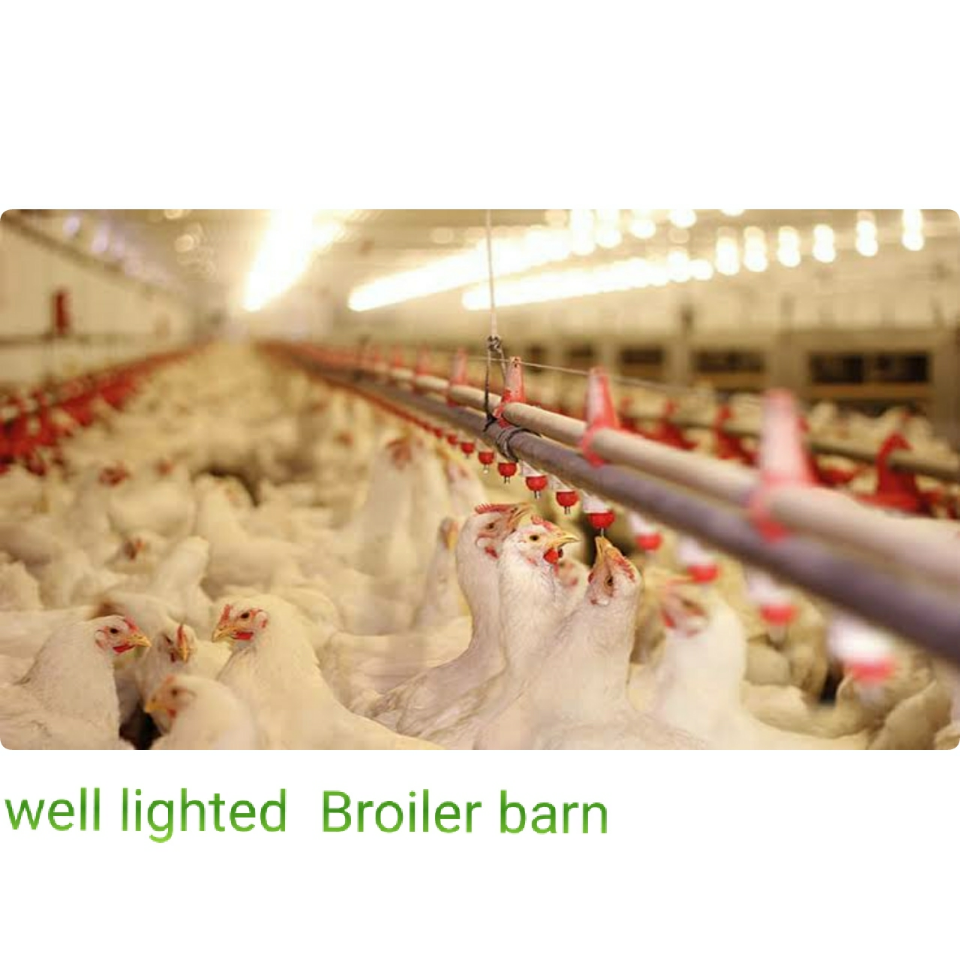
When managing a healthy, productive broiler flock, getting the lighting conditions right could be more important than you think. In general, birds tend to be more active when they have a day-night cycle. They will actually grow better, which is really interesting and the total opposite of what was thought many years ago.
It has been suggested that a constant lighting program (such as 23 hours light and 1-hour darkness) might not be the best in terms of feed digestibility. During constant lighting, birds seem to overconsume feed, which leads to increases feed rate passage. Because these birds are fed at or near-maximum genetic potential levels, this extra feed they consume has limited time to interact with digestive enzymes, resulting in reduced feed digestibility with poor litter quality.
birds tend to be more active when they have a day-night cycle. They will actually grow better, which is really interesting and the total opposite of what was thought many years ago.
In contrast, a lights-on, lights-off program (for example, 1 hour light, 1-hour darkness, and so on) allows birds to fully digest their feed while resting (which also improves feed efficiency as birds do not walk aimlessly all day) and gives them enough time to "refill" during light hours. The only problem with this system is that there should be enough feeding spaces for all birds to eat simultaneously, something that requires careful pre-placement feeder management.
Also read: Poultry vaccination and schedule for Layers and Broilers
3. Airflow/Ventilation
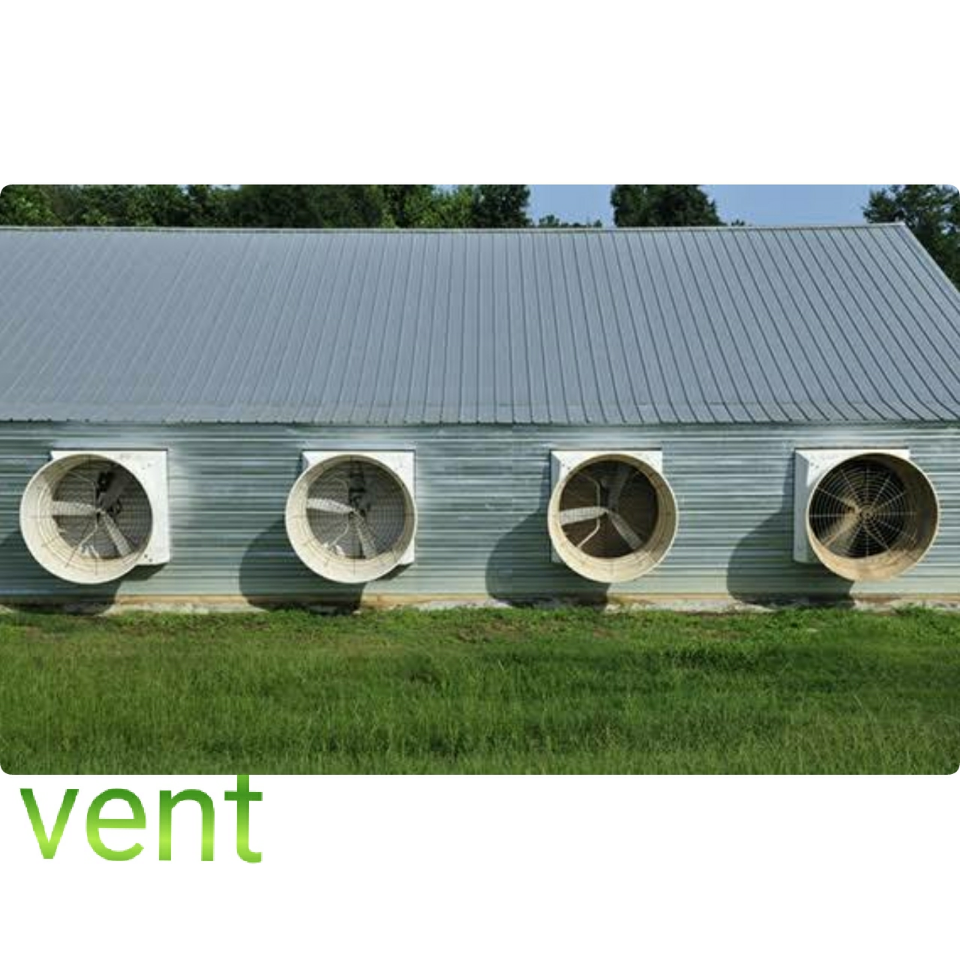
Ventilation is one of the most essential principles of raising broiler chickens on farms, which is the only way to reduce the respiratory problems of the bird and to achieve top performance and the highest conversion rate.
Ventilation is an important factor that controls the productive performance of birds. Poor ventilation causes low weight and food conversion rate (FCR), as well as respiratory diseases that increase the mortality rate, reduce the immunity of chickens and make them susceptible to bacterial and viral diseases and eventually develop respiratory disease Chronic Respiratory Disease (CRD), which is difficult to treat and causes significant economic losses, and poor ventilation leads to increased incidence of Hock Burn as well as bumblefoot.
The level of trigger gases such as carbon (iv)oxide and ammonia emitted by the birds should be constantly checked. For backyard farmers that may not have the sophisticated equipment to measure these gases, you can use your nostril and eyes to detect when the pen is saturated with these gases and take the necessary action to restore normalcy. For me, once I can not breathe well and feels some itching in my eyes I know there is a need to improve ventilation or change the litter.
Effect of good ventilation on the chicks
- You will not find respiratory problems.
- Increase the appetite of the bird.
- The disappearance of the smell of ammonia in the house and reduce the problems of the eye.
- In the end, the efficiency of the conversion rate rises and we get high weights
4.Water Quality/Quantity
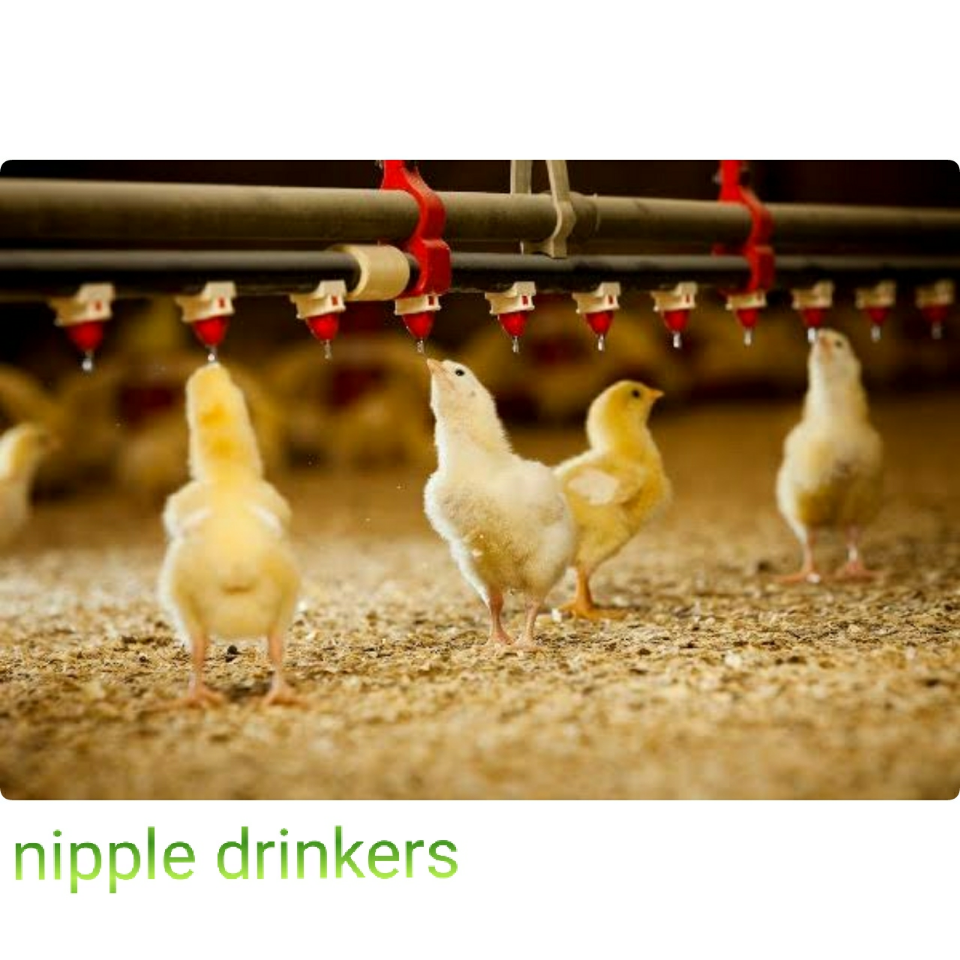
Water is an essential nutrient that we pay little attention to until a problem arises. Not only should producers make an effort to provide water in adequate quantity, but also in quantity. A bird consumes water twice the amount of feed it consumes because this water is also used not only in feed digestion but also in cooling the system, especially in hot weather. Providing safe, palatable water in sufficient quantities is fundamental to achieving the genetic potential for growth and egg production in poultry flocks
Water and food consumption rates are interdependent, so reduced water intake can also lead to reduced food intake. Other factors affect water intake, with the temperature being the most obvious one. For example, chickens drink between 30-50% more water when the environmental temperature is above 32oC compared with when it is 21oC. Water intake is also affected by the type of drinkers used. The rule of thumb for water intake is that water intake is usually 1.5 to 2 times feed intake.
The tables below provide data on typical water consumption levels for broilers at 21oC. (liters per 1000 mixed-sex birds)
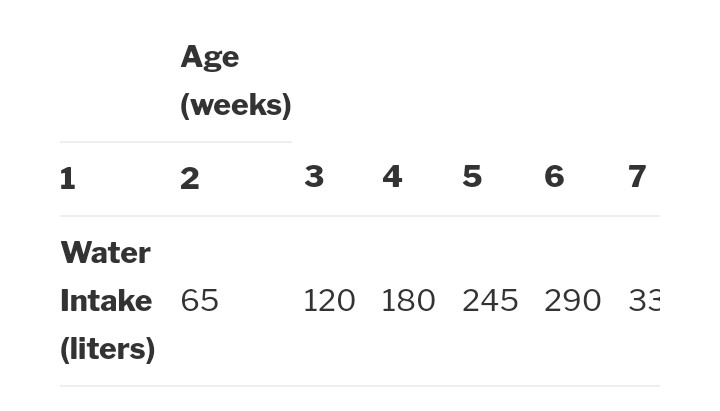
Source: Poultry CRC
What you should do on the management of water
- Conduct water tests. You should have your well water tested. Water quality can change during periods of heavy rain or drought, and additional water tests during these periods will ensure that water lines continue to deliver adequate water volume for both the birds and the cooling systems.
- Change filters regularly. Sediment and other particulates can cause leaky water nipples that can have negative effects on litter quality logged filters restrict water flow to the drinker and cooling systems.
- Flush water lines regularly. Perform a high-pressure flush on water lines between each flock and after adding supplements through the mediator (i.e., vaccine, medications, vitamins, electrolytes, etc.).
Also read: Cost For Rearing 100 Broilers In Nigeria with The Profit Amount
5.SPACE
The floor space needed for broilers changes depending on their body weight at the time of marketing, housing systems, marketing age, and ambient temperature. The feeder and waterer space also changes depending on the environmental temperature and health condition of the birds.
The modern broiler house enables producers to have great control over the house environment. Birds can be placed at higher densities as long as the correct environment (temperature, ventilation, humidity) is provided. Factors to consider when determining stocking density include but are not limited to bird size, feeder space, drinker space, house dimensions, bird welfare, nutrition, breed, performance, and economic return. The following is the approximate floor, feeder, and waterer space requirement for broilers.
| Age | Floor space/bird | Feeder space/bird | Waterer space/bird |
| Up to 18 days | 450cm2 (0.5sq.ft.) | 3cm | 1.5cm |
| From 19 days to 42 days | 1000cm2 (1.1 sq.ft.) | 6.7cm | 3cm |
6. Sanitation/Biosecurity
We as poultry farmers always have perfect and comprehensive biosecurity measures on paper but the problem is most of the time we don't implement them correctly.
Over the past decades, there has been tremendous growth in the global poultry industry. some regions have reported a drastic increase in the incidence of infectious disease outbreaks during this period of rapid expansion. Despite the difficult challenges that the industry has been facing, poultry products ( meat and eggs) still represent a major part of animal protein consumed by humans at the global level.
As a poultry farmer, maintaining the excellent health of your flock should be your priority, because a healthy flock is usually a profitable flock. Despite all progress in the prevention and control of infectious diseases, it is still difficult to keep a commercial poultry facility disease-free
. Diseases are generally responsible for mortality and reduced growth rate and egg production in a poultry flock
Things you should do to ensure you keep your birds safe from diseases
- limit the number of times you and your visitors frequent your pen
- place footbath filled with disinfectants at every entrance
- make sure farm visitors change into farm's clothes and boots
- clear every stagnant water to prevent mosquito breeding
- birds from the market should be kept for about 14 days before mixing them with the flock
- patch and close up all rodents runways or burrowing paths leading to your pen
- Practice all-in, all-out production
In conclusion, improving your broiler performance goes beyond quality feed and birds. Providing enabling environmental conditions is a key to profitable farming. I know it is not easy to put all these into practice but the result will surely pay off.
Sharing is Caring!
Please comment and share.
Need a website or other IT services? Visit our website!
Share on Twitter Share on Facebook
Comments
There are currently no comments
New Comment